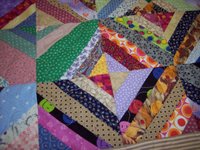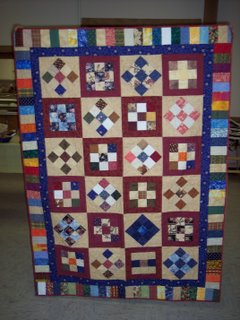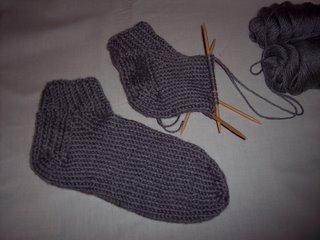Yes, we put most of our efforts into designs based on the nine-patch block...but we also wanted to find a way to use other blocks we'd already generated. Mrs. F. had quite a collection of 6-1/2-inch, foundation-pieced blocks in a joyful array of scrappy fabrics. I was intrigued by her technique, and asked her to explain.

She started by cutting 6-inch squares of fleece interfacing. (Note that it really is a 6-inch square, not 6-1/2.) She foundation-pieced random strips and wedges of fabric diagonally across the fleece, with a little excess around the edges. She trimmed each block back to 6-1/2 inches, carefully centering the fleece and creating a non-fleecy quarter-inch clearance for a non-bulky seam.
We quickly decided the blocks would make terrific baby blankets for some of the little ones at the agency's emergency group home. And indeed they did. Mrs. F. had enough blocks to make several of them...and the fleece interfacing eliminated the need for batting. The quilts were lightweight, wrappable and still cozy....all thanks to scraps that would have otherwise ended up being tossed away.

Besides being cute as a button, Mrs. F. also has the finest collection of Janome sewing machines I've ever seen!




